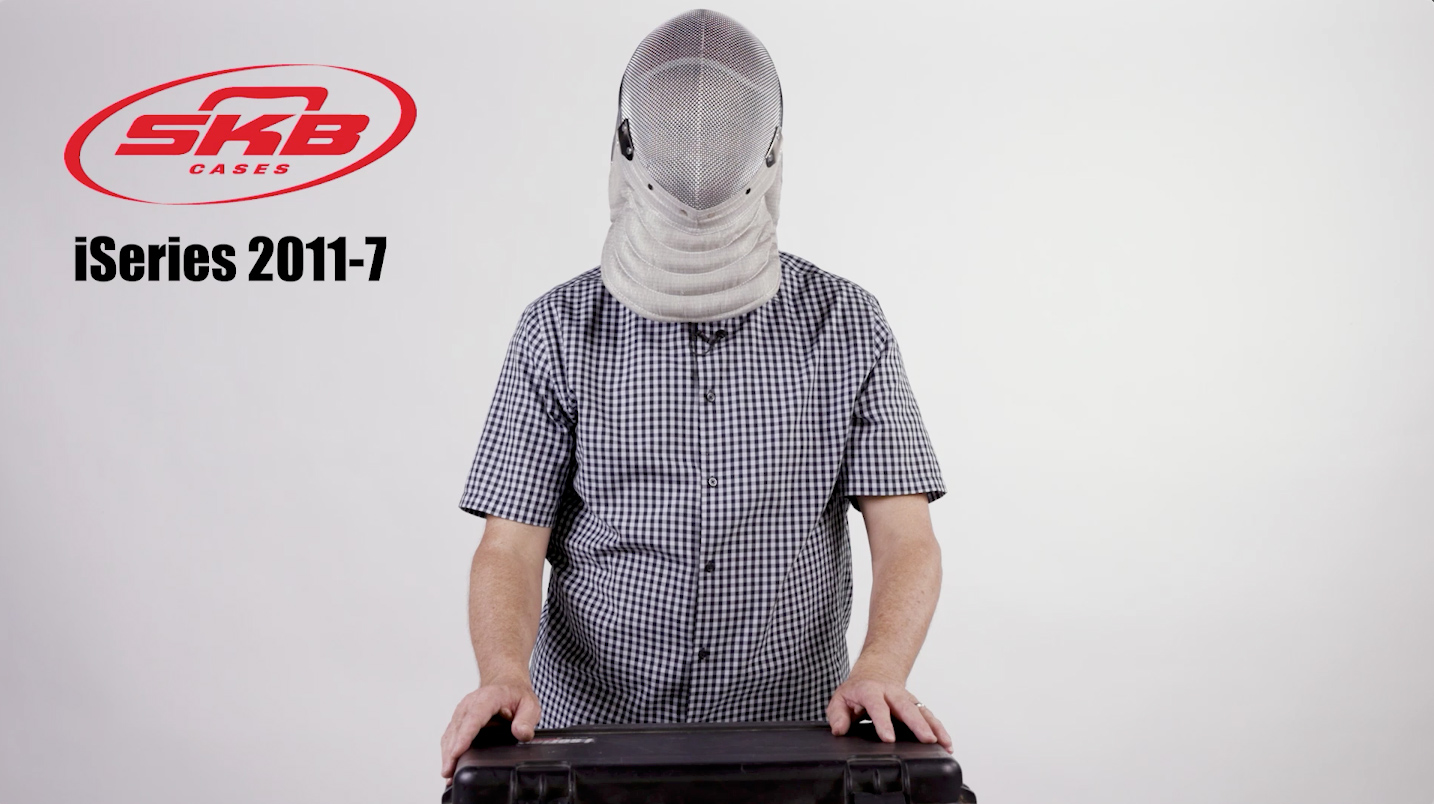Hands on review of the Tamron 11-20mm F/2.8 APS-C Ultra Wide Angle Lens. A 35mm equivalent focal length range of 17-30mm. See the results from Jay P’s walk around shoot in Los Angeles capturing architectural iconic structures using this wide angle lens built specifically for APS-C Cameras. Take a look and let us know what you think!
Hi, this is Jay P. Morgan. Today on The Slanted Lens we’re down here at the LACMA installation of Urban Lights. We’re going to take a look at the 11-20mm lens from Tamron. That’s a 17-30mm equivalent. That’s that wide lens for the trinity for an APS-C sensor, 11-20mm. So we’re going to take a look at that shoot and just see how it resolves and what the images look like. We’re just going to play around and get some nice images here. So let’s get started and see what we can do.
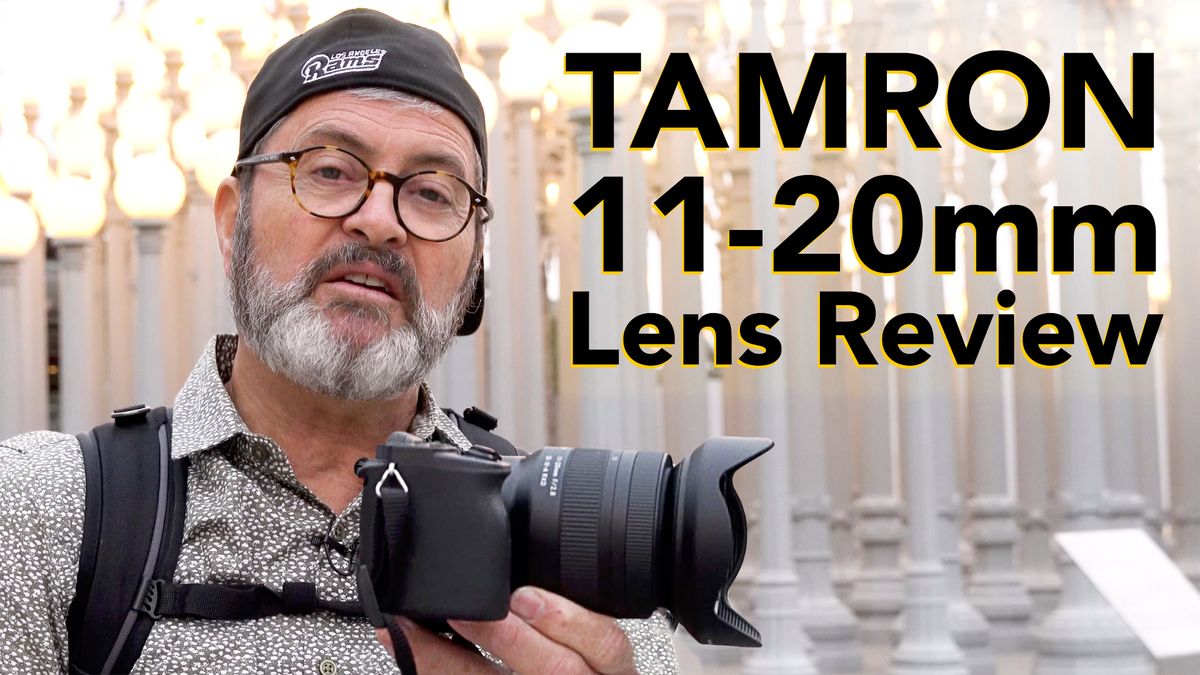
This is a wonderful lens to shoot with, because that 17 millimeters gives you that wide perspective, which allows you to get that forced perspective. Things can be really close and in focus, and then deep. It focuses to about 5.9 inches, which gets you very close like a one to four macro capability. So you can get super close to your subject matter and it allows you to get that forced perspective. I absolutely love it. So I’m going shoot some more of those.
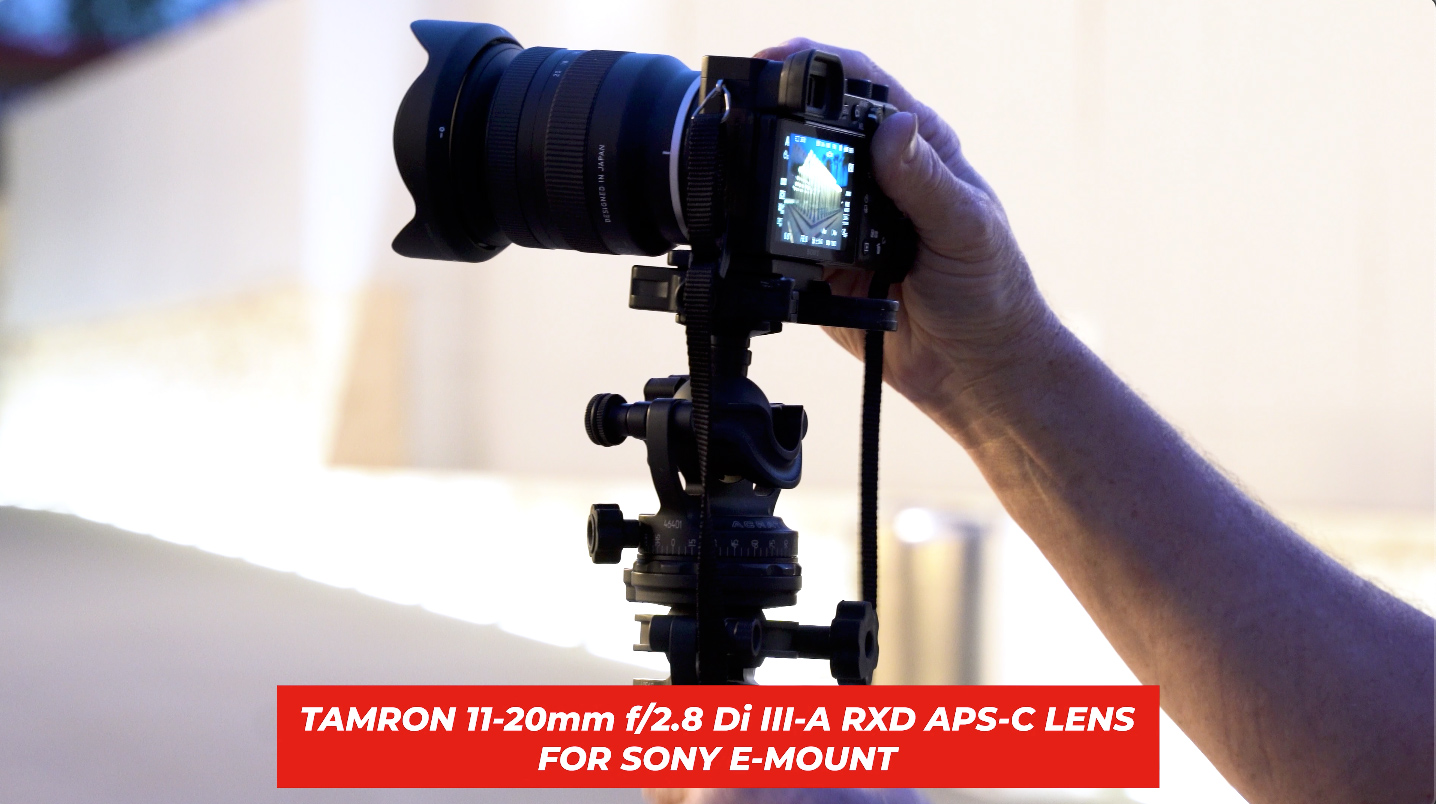
The reason you want to buy an APS-C lens for an APS-C camera is they resolve on the sensor correctly. It is a bit sharper. It’s going to be clear. They are just made to resolve on the sensor. 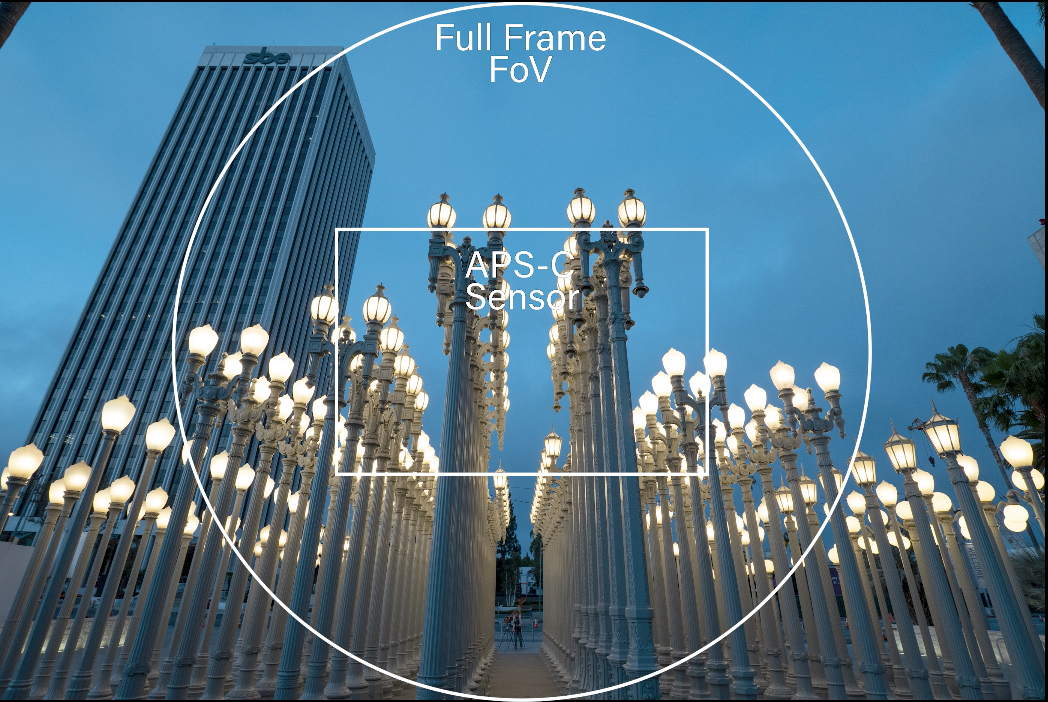 You’re not cutting the center out of something else. Some people might say, well, that 35mm equivalent should be sharper, but it does not resolve as well. An APS-C lens is made to do that. And you can see it in these images. They are sharp edge to edge and that’s why it’s so important to buy a lens that matches the camera.
You’re not cutting the center out of something else. Some people might say, well, that 35mm equivalent should be sharper, but it does not resolve as well. An APS-C lens is made to do that. And you can see it in these images. They are sharp edge to edge and that’s why it’s so important to buy a lens that matches the camera.
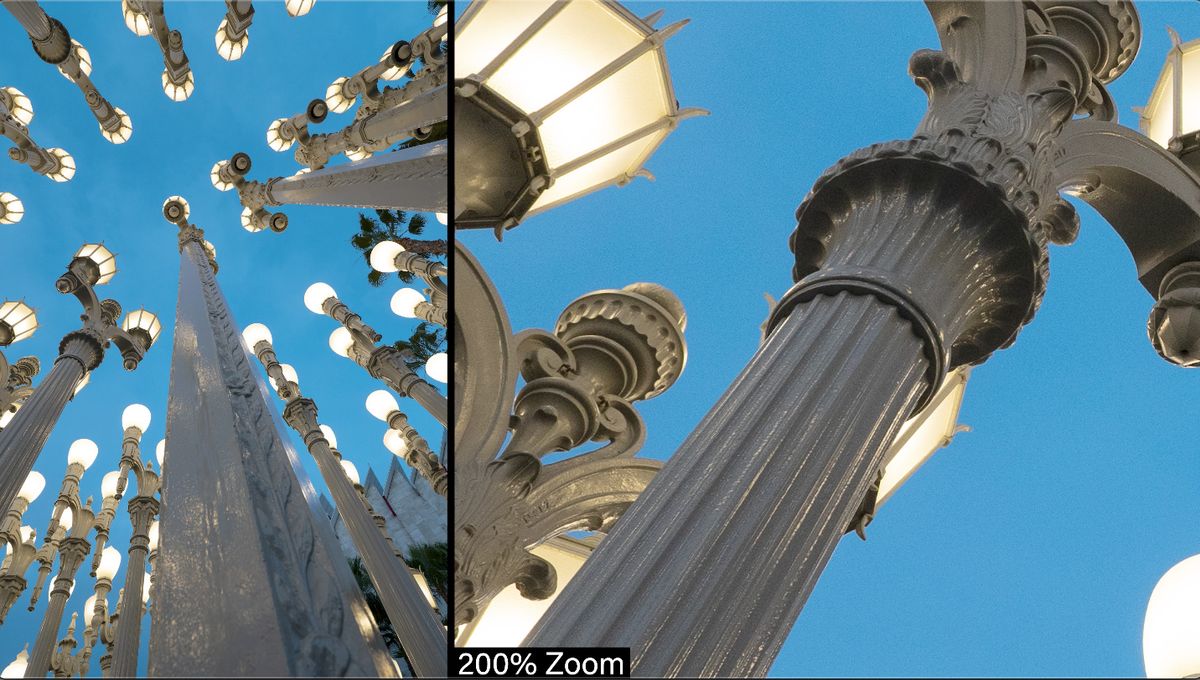
So the reason this is the goal of all zoom lenses to get to f/2.8 is because it gives you the ability to control the depth of field. Things can fall out of focus. It just gives you a lot more control. It’s a faster aperture, which allows you to shoot in lower light situations. It really is the ideal kind of setup. Obviously, when you have an f/2.8 that gives you nice bokeh and that’s one of the reasons with zoom lenses that’s the desire, just speed of the lens and great bokeh.
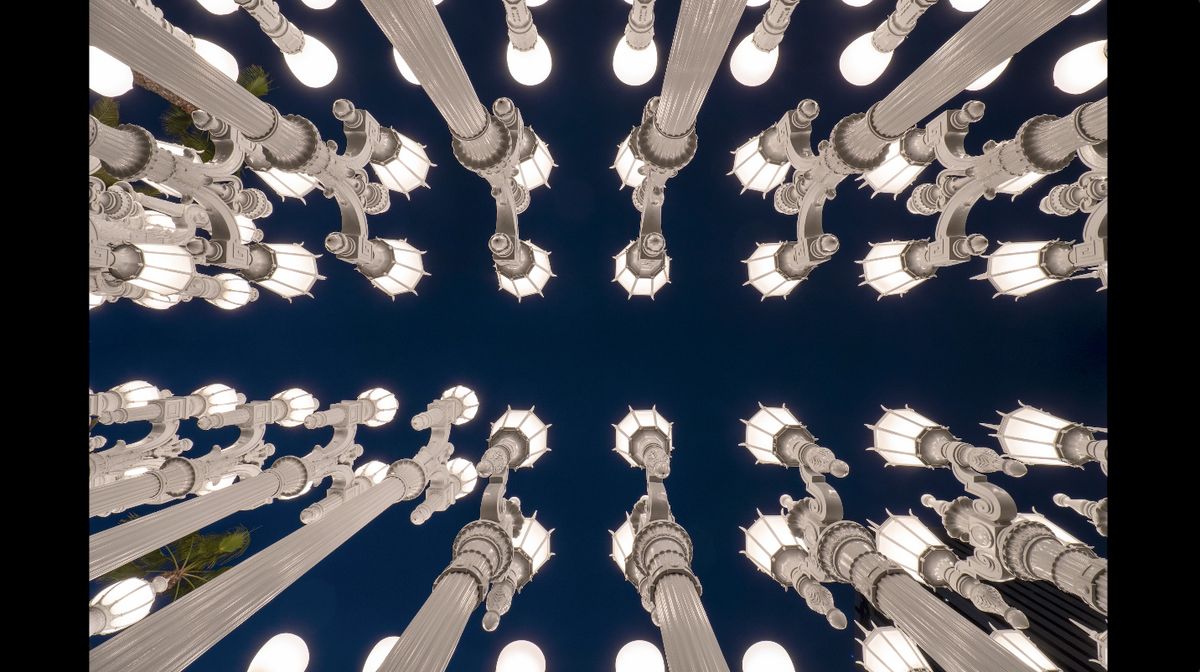
I keep changing the autofocus up closer and then further away, and it’s responding very quickly, and then it jumps very quickly. It’s a wide lens, so it should. 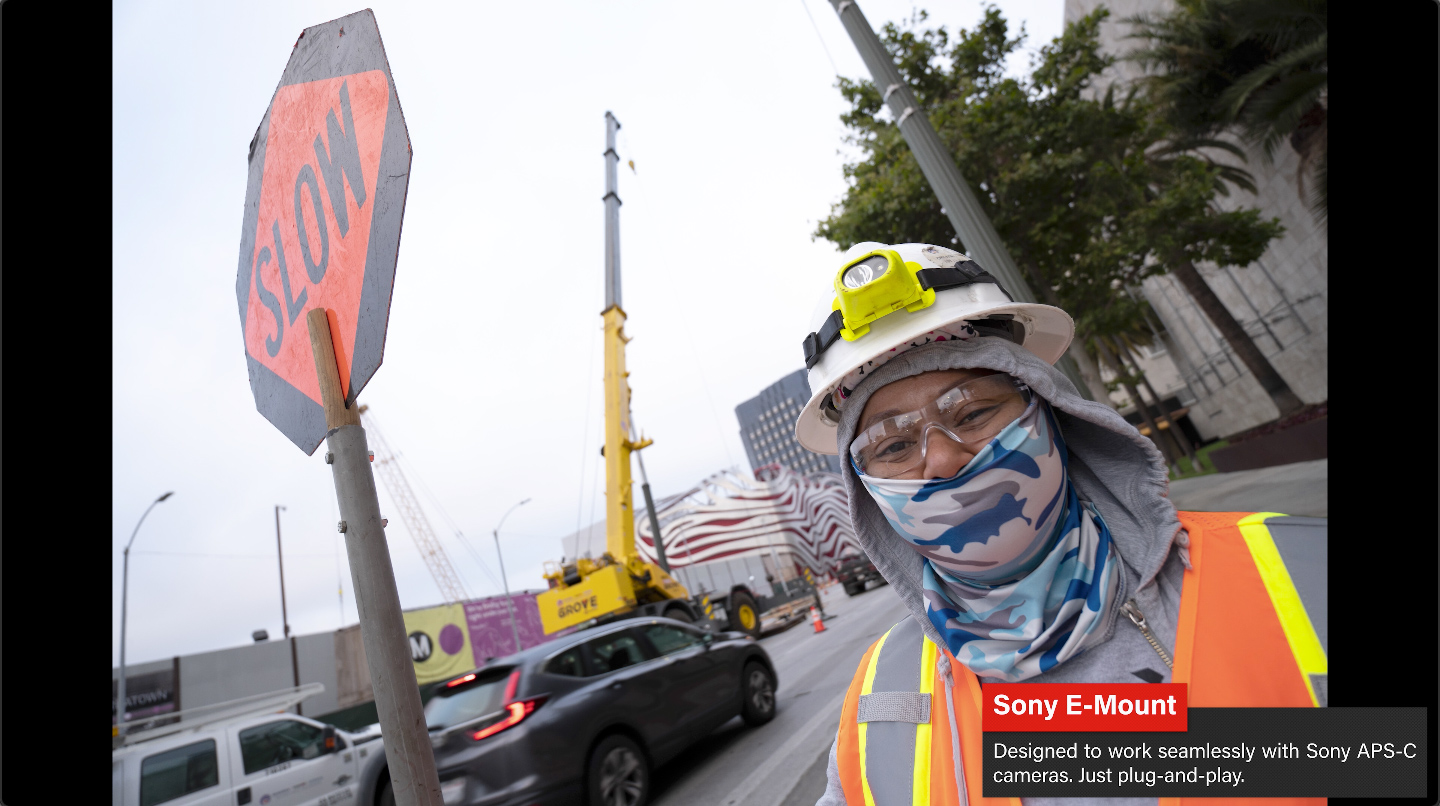 And certainly it works very well with the Sony a6600. It’s communicating completely with the camera and focusing very quickly. So I think the autofocus is working great.
And certainly it works very well with the Sony a6600. It’s communicating completely with the camera and focusing very quickly. So I think the autofocus is working great.
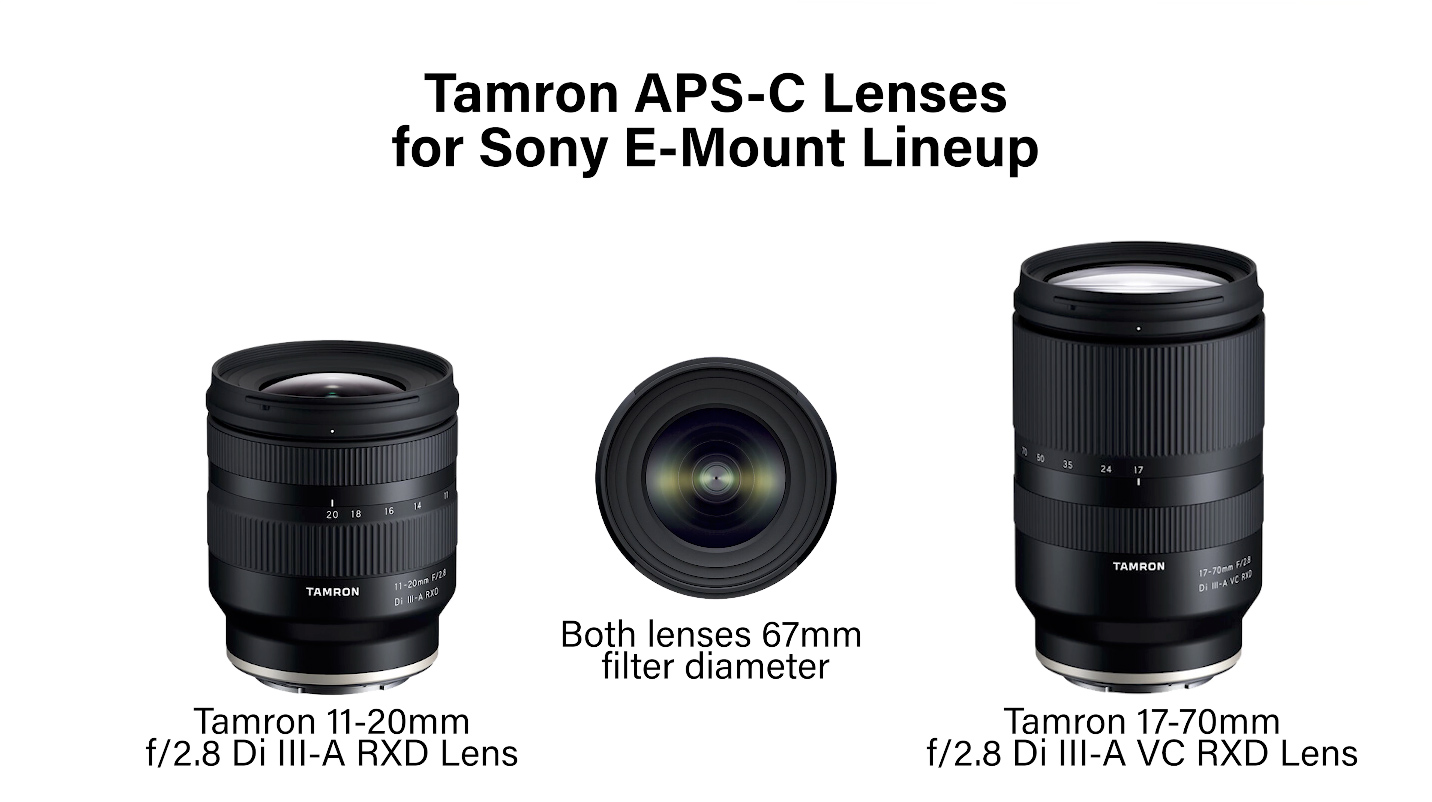
I want to reiterate how much I appreciate this series of lenses. They’re all on this very small compact lens housing. They have a 67 millimeter, which makes them all share the same filter sizes. They’re super compact and super lightweight. 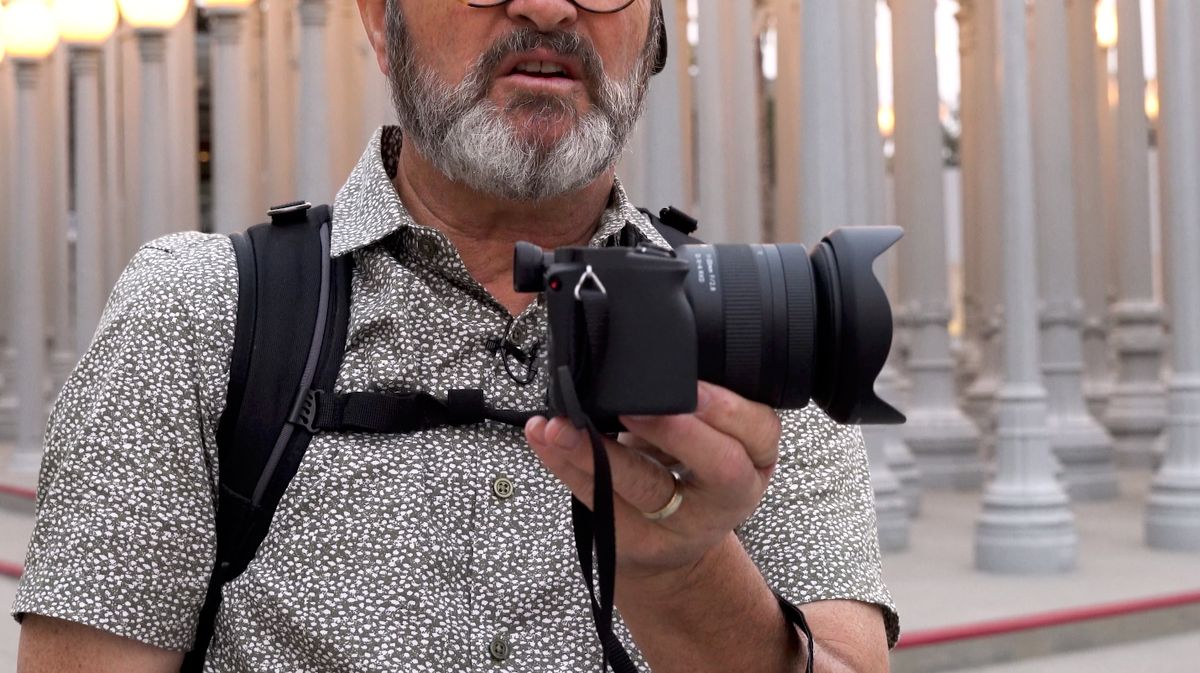 Look at that on the a6600. It just makes perfect sense. That’s the equivalent of a 17-30mm lens, which makes this a great walk around kind of shooting lens. If you’re going to do architecture or if you want to just be walking downtown looking at buildings. It’s a great setup. It really is. I just love how lightweight these are.
Look at that on the a6600. It just makes perfect sense. That’s the equivalent of a 17-30mm lens, which makes this a great walk around kind of shooting lens. If you’re going to do architecture or if you want to just be walking downtown looking at buildings. It’s a great setup. It really is. I just love how lightweight these are.
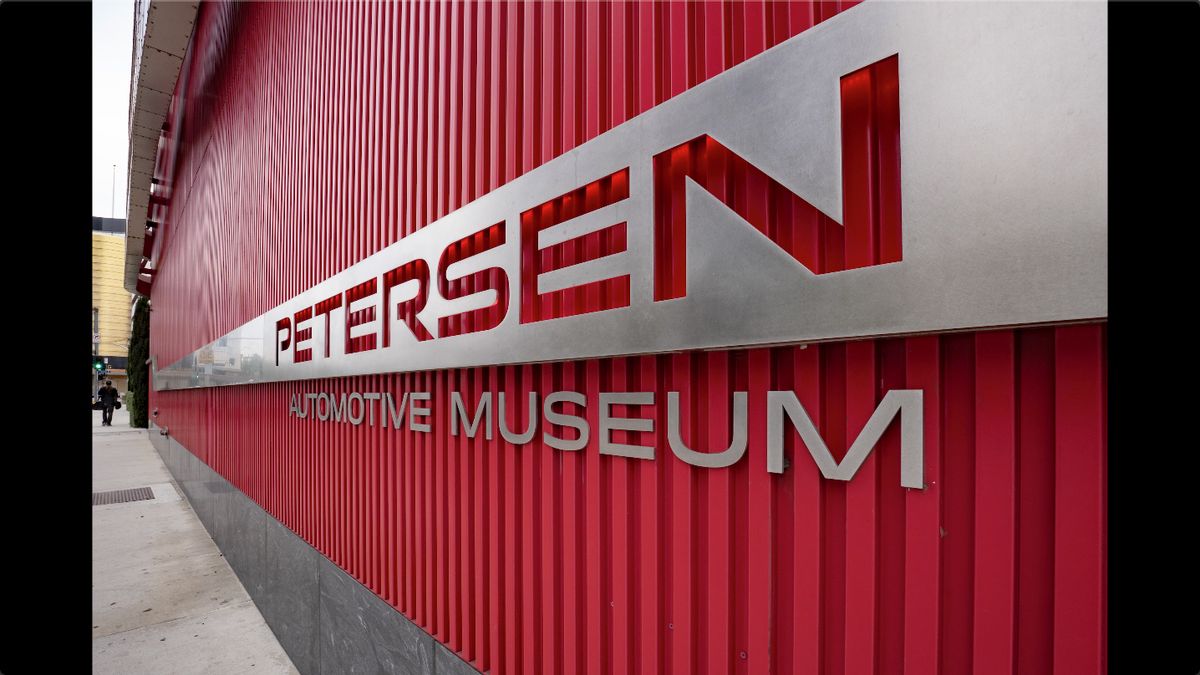
This is the Petersen Automotive Museum. It’s been redone the last few years. It has beautiful lines to be able to work with that forced perspective. 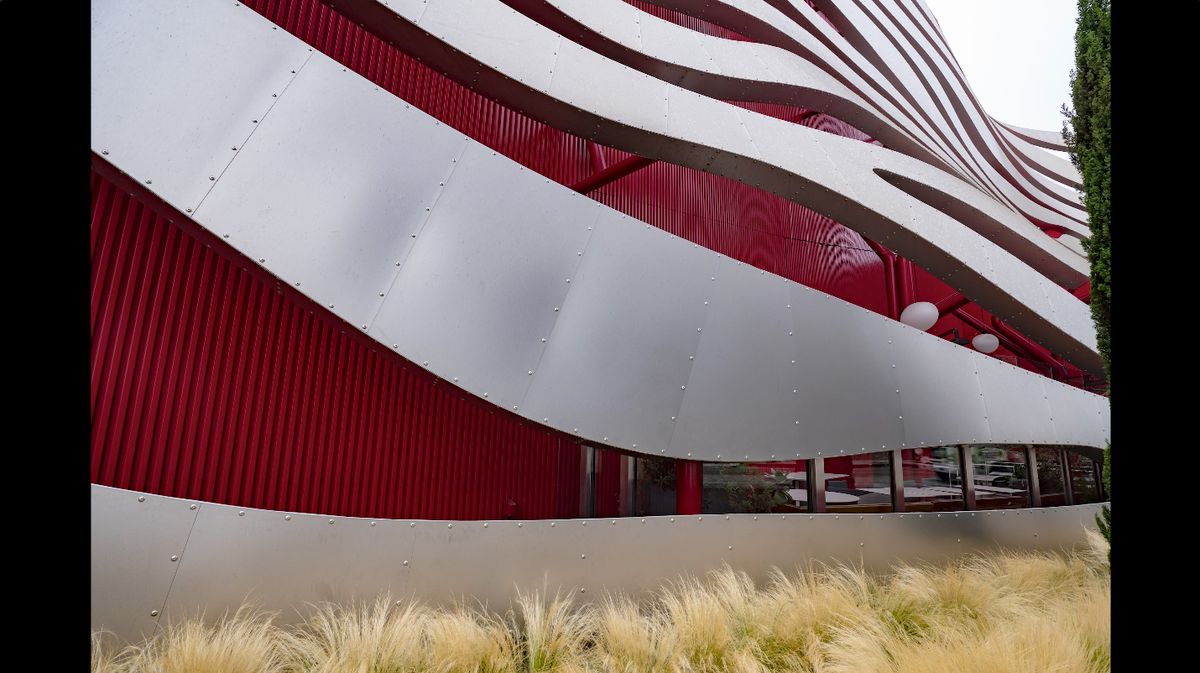 I love the wide angle and being able to get up 17 millimeters to be able to show that forced perspective. It’s just a lot of fun.
I love the wide angle and being able to get up 17 millimeters to be able to show that forced perspective. It’s just a lot of fun.
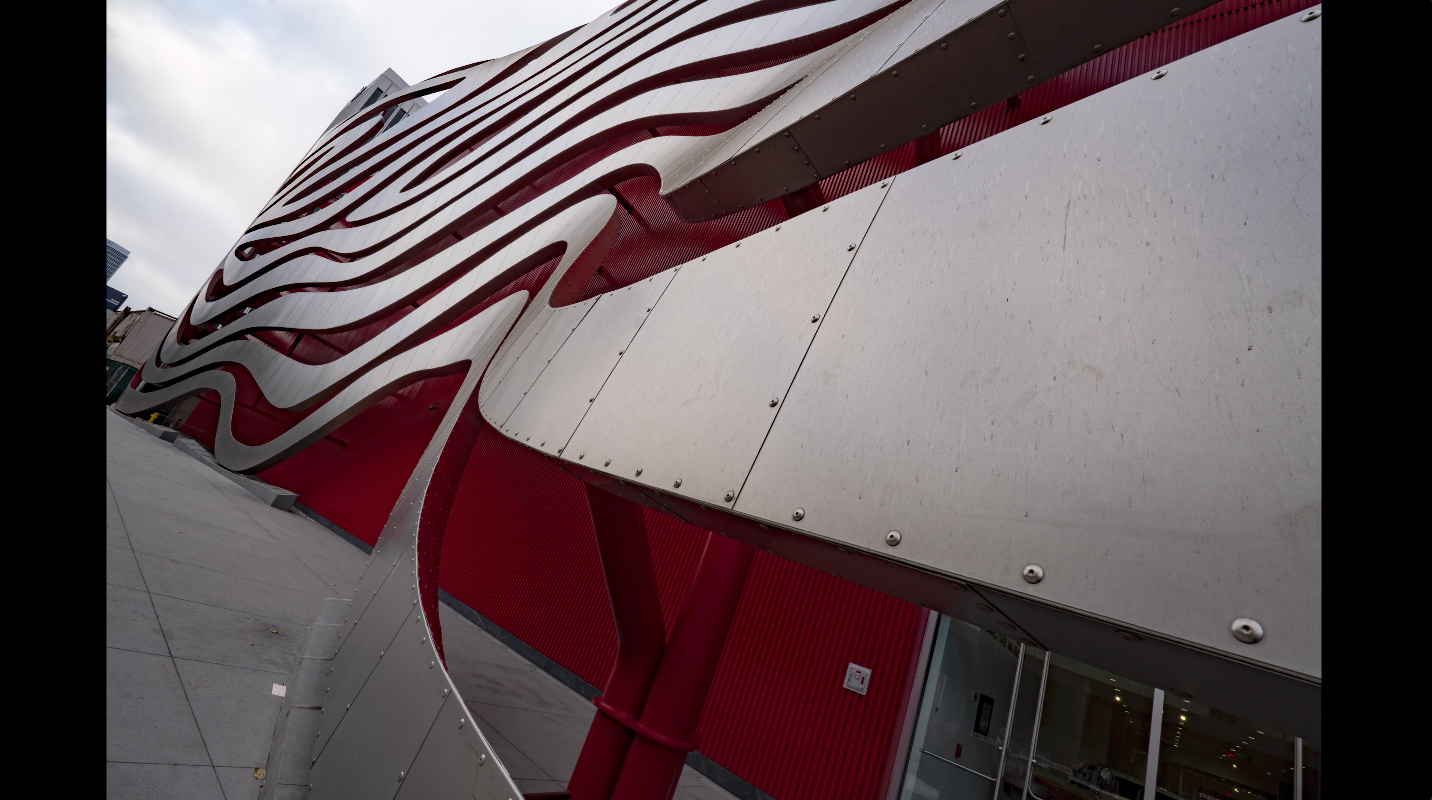 And with this lens the autofocus is working really well. I did go to manual focus for some of these. So I can find exactly where I want to focus on the building. But it’s been working excellent. So it’s a lot of fun. I love doing this.
And with this lens the autofocus is working really well. I did go to manual focus for some of these. So I can find exactly where I want to focus on the building. But it’s been working excellent. So it’s a lot of fun. I love doing this.
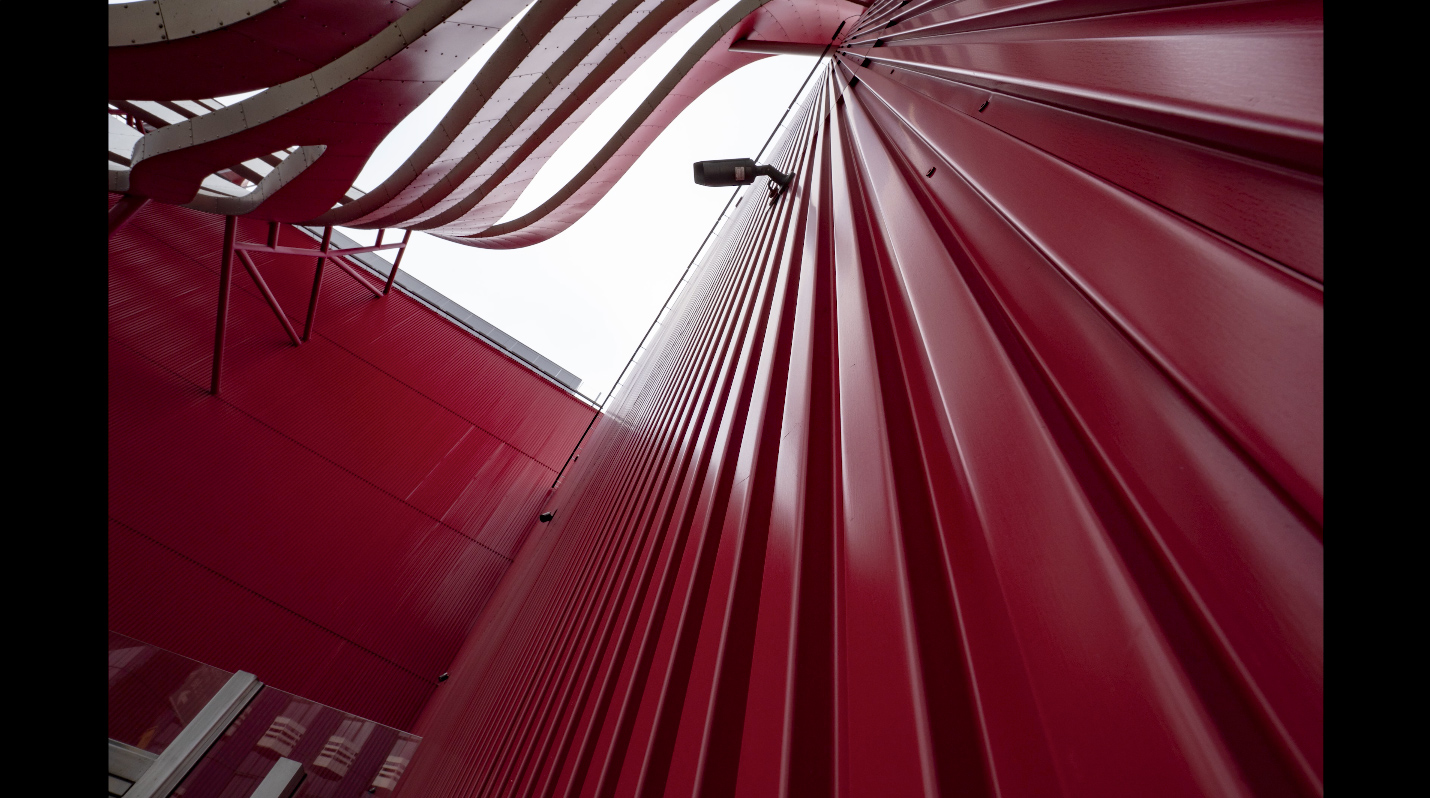
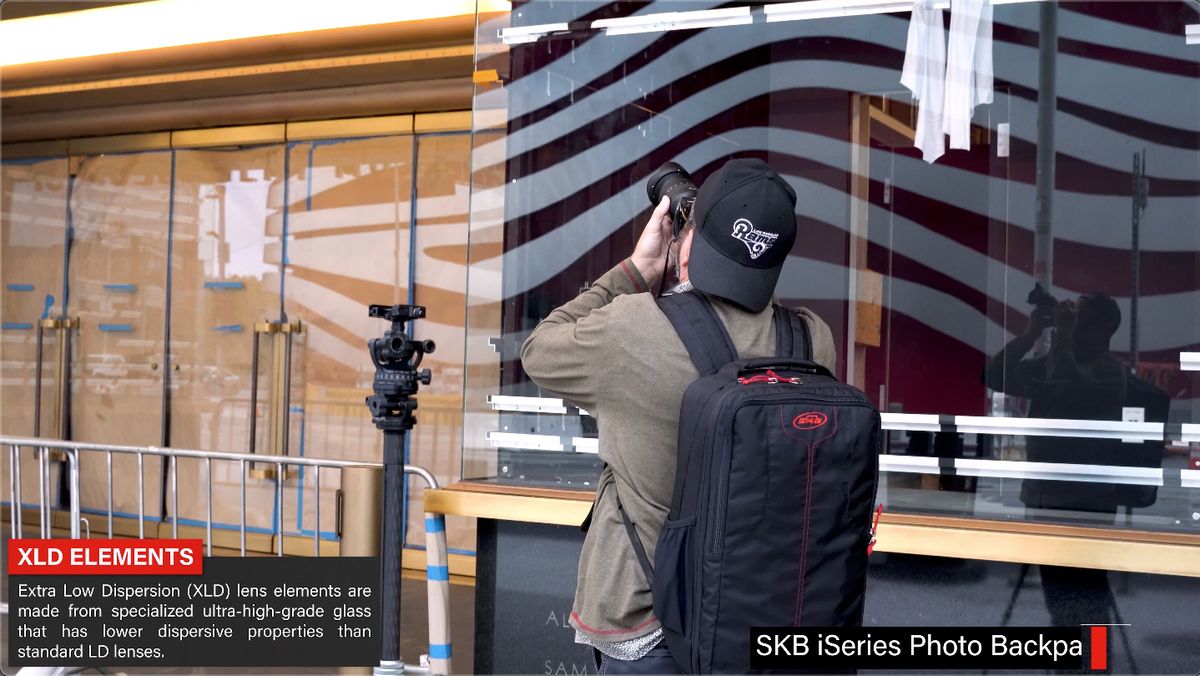
So the XLD glass and XD glass in this lens is really made and molded so you get less chromatic aberration. It just gives you a cleaner image. 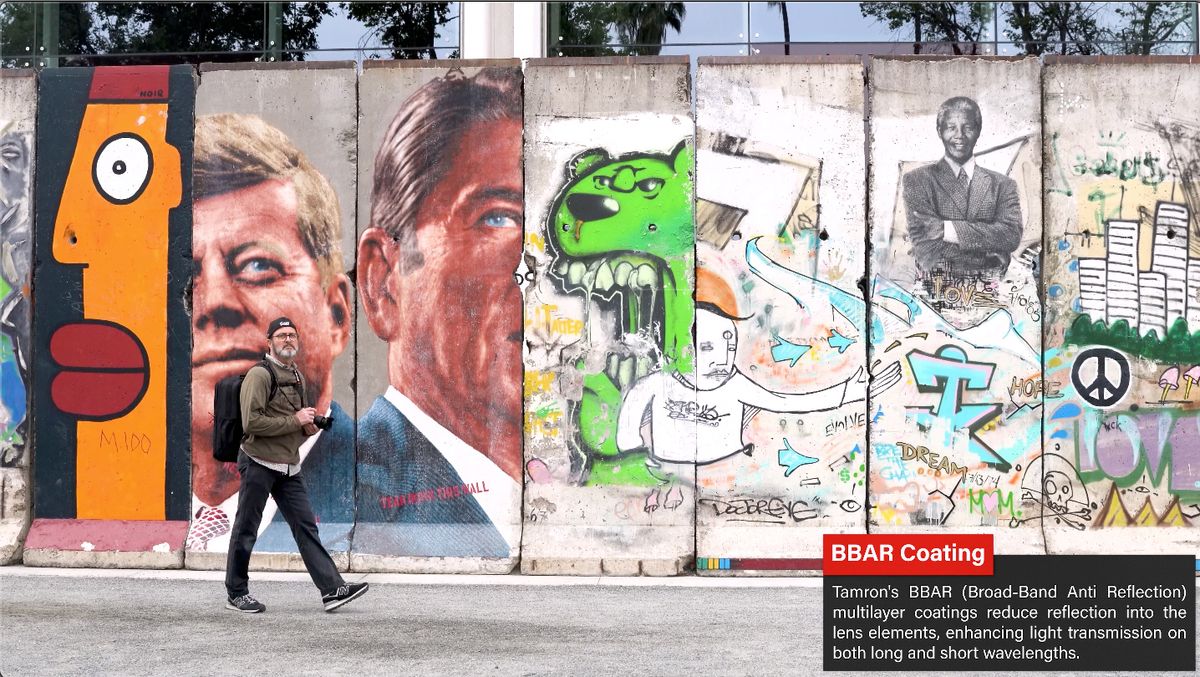 And the B-bar II coating on the elements inside this lens kind of keep it from flaring or ghosting inside, internally in the lens. It gives you better contrast. It gives you a sharper image.
And the B-bar II coating on the elements inside this lens kind of keep it from flaring or ghosting inside, internally in the lens. It gives you better contrast. It gives you a sharper image. 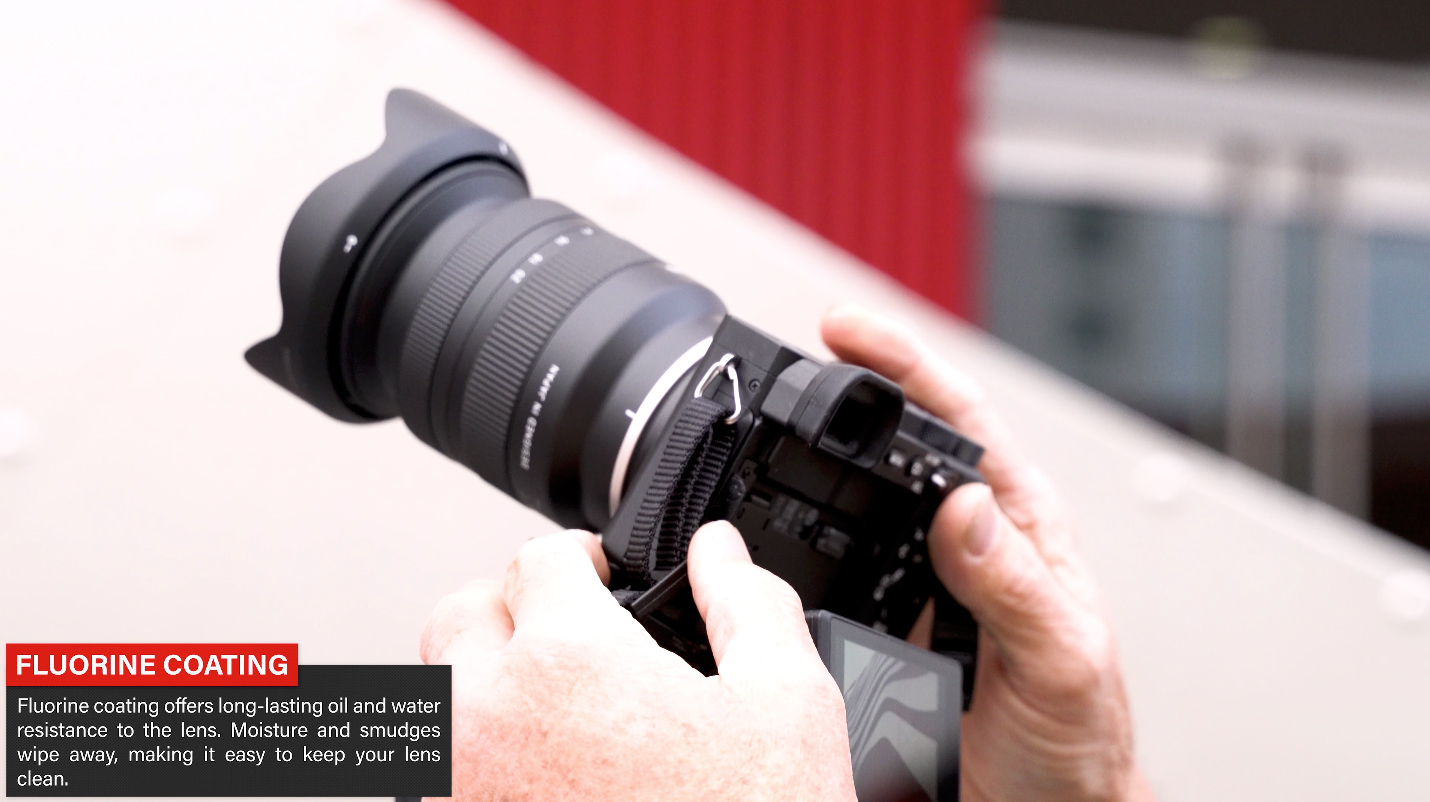 The lens also has a fluorine coating on the front of it. It’s kind of like fluoride for your teeth. It gives you a little extra protection, but it’s flourine for a lens. So all these lenses, the entire series, is made with moisture resistance and made so you can take them out and use them outside.
The lens also has a fluorine coating on the front of it. It’s kind of like fluoride for your teeth. It gives you a little extra protection, but it’s flourine for a lens. So all these lenses, the entire series, is made with moisture resistance and made so you can take them out and use them outside.
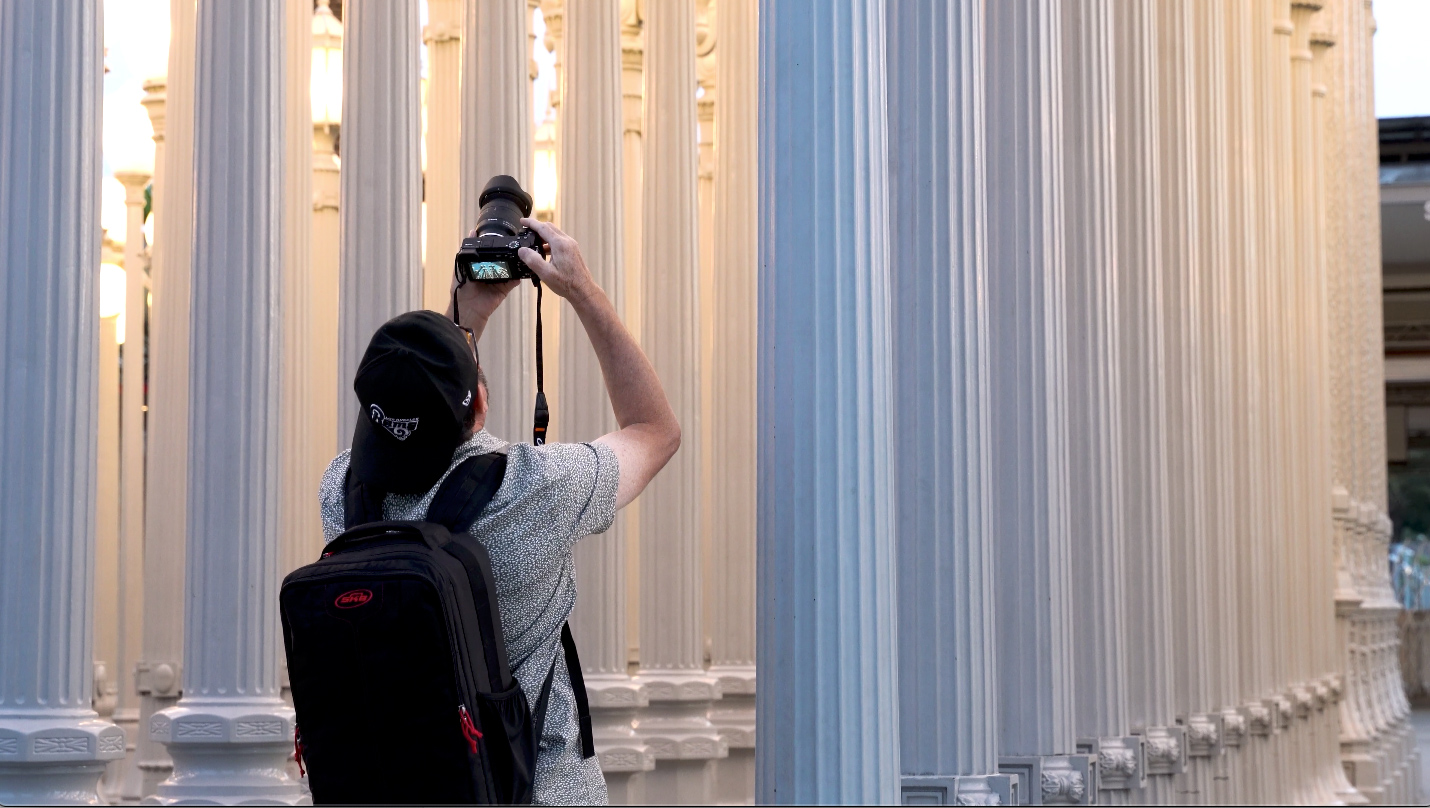
I think if you are using an APS-C sensor this is the lens series you should get yourself into because it’s affordable. It gives you great quality. 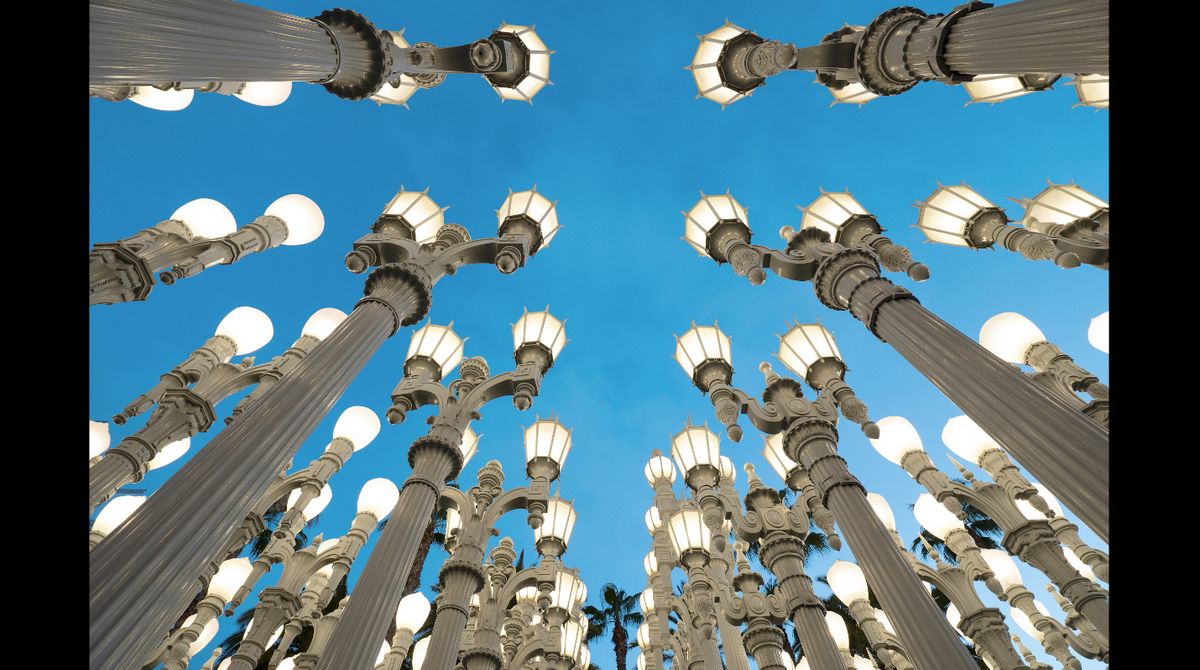 The images are sharp. And it really is resolved for an APS-C sensor. And that makes a big difference because it’s going to be sharper. It is going to look better on that APS-C sensor.
The images are sharp. And it really is resolved for an APS-C sensor. And that makes a big difference because it’s going to be sharper. It is going to look better on that APS-C sensor.
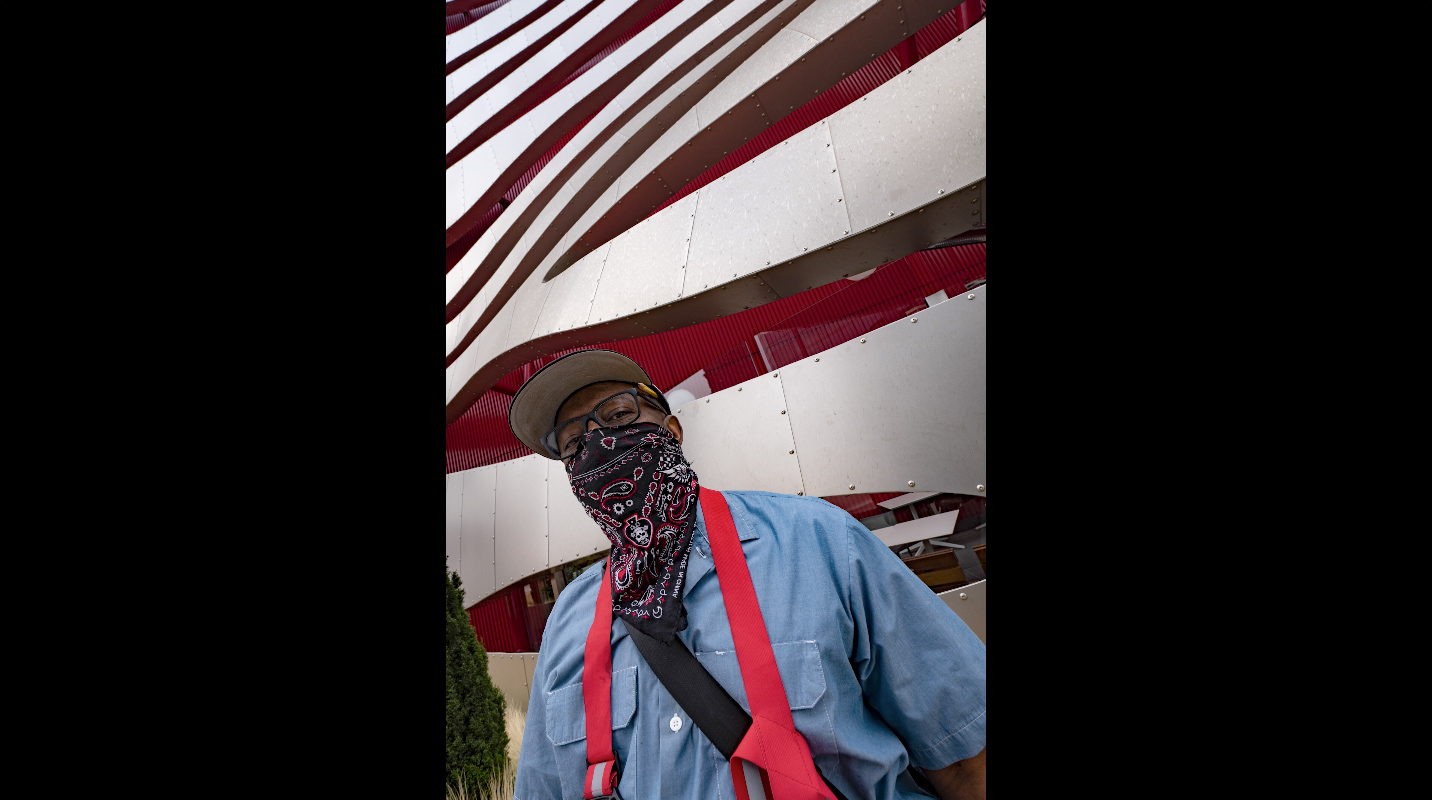
Alright, so it’s been a lot of fun. I hope you enjoyed it. Please leave us a comment. We love to hear from you. And keep those cameras rollin’ and keep on clickin’.
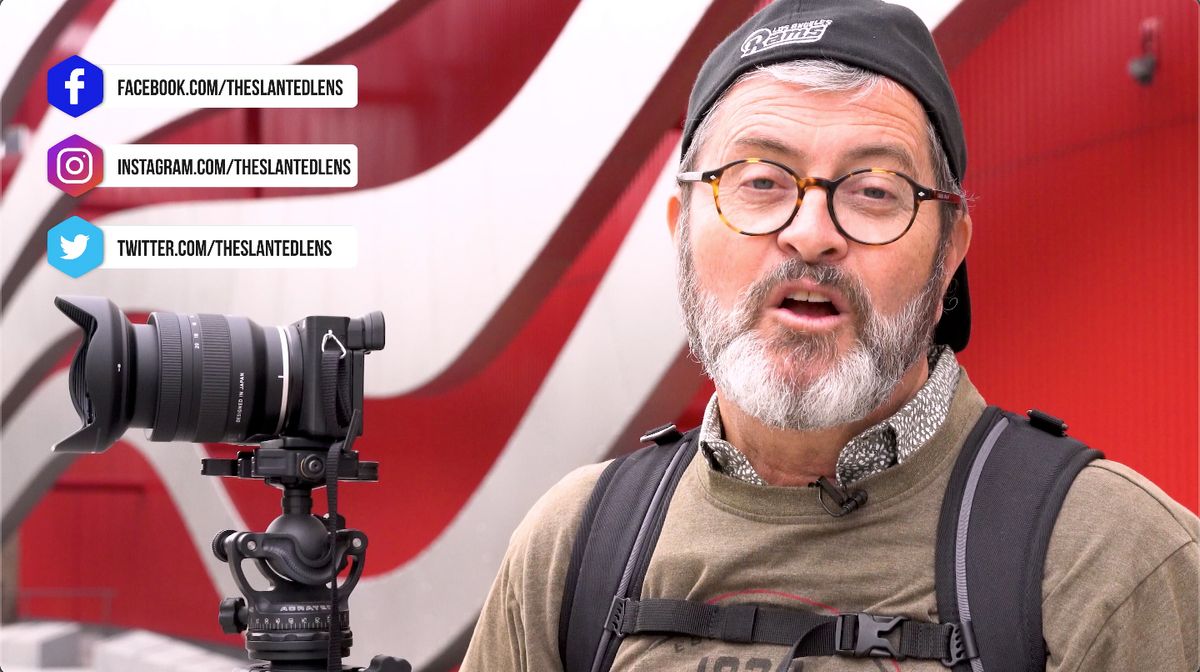
This is my Hasselblad film kit my SKB 2011 case. 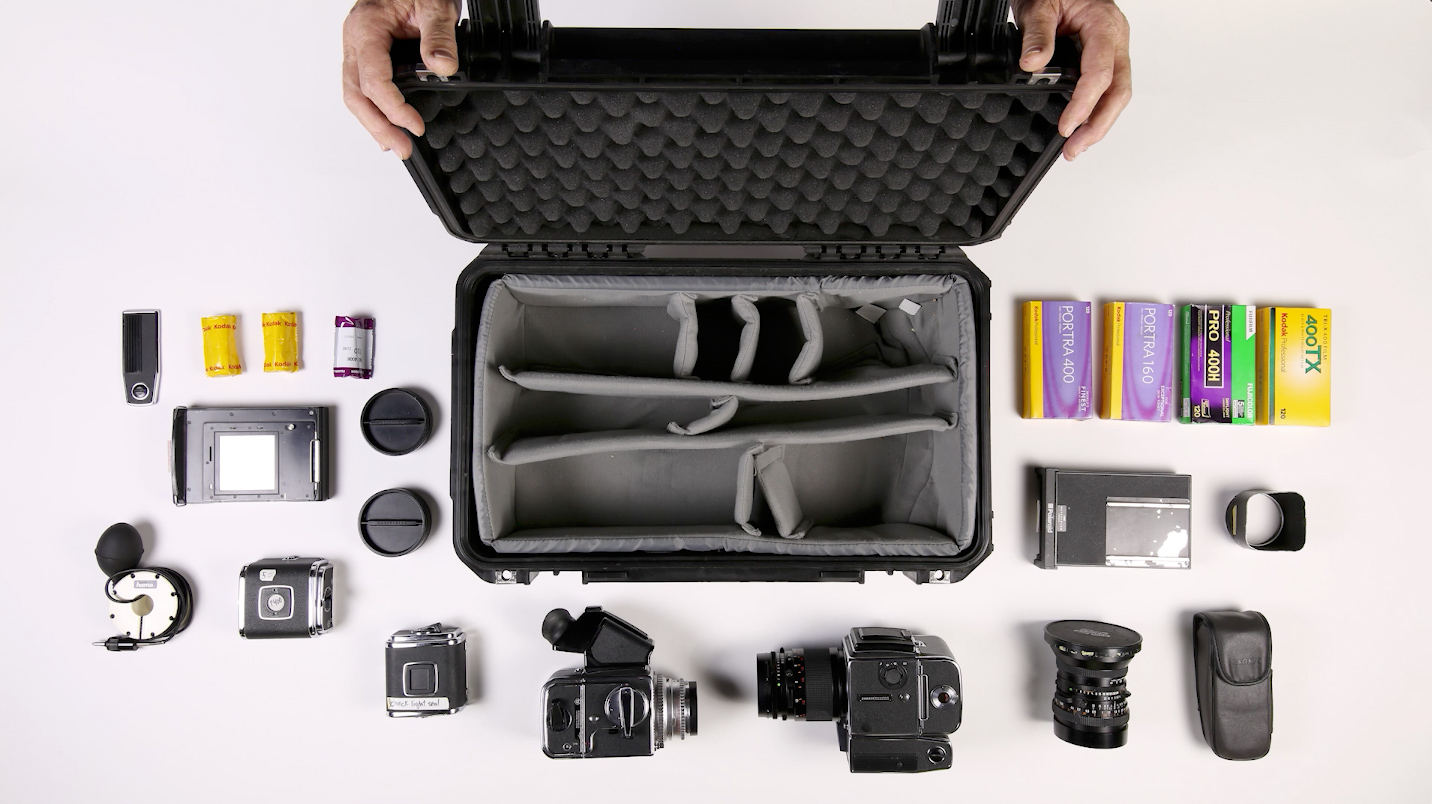 Hasselblad 500 CM with an 80 millimeter lens and a prism, 500 EL/M with 120 millimeter lens, two spare camera backs, 40 millimeter lens, air bulb shutter release, Sekonic 358 light meter, lens and body caps, Polaroid back, another Polaroid back, lens shade for the 500 CM, battery cover for the EL/M, 5 pack of Portra 400, 5 pack of Portra 160, 5 pack of Fujicolor 400H, 5 pack of Tri-X 400, 3 rolls of 120 film, off we go. Well that’s my Hasselbald equipment that I carry in my SKB 2011 case. Let’s go shoot some film.
Hasselblad 500 CM with an 80 millimeter lens and a prism, 500 EL/M with 120 millimeter lens, two spare camera backs, 40 millimeter lens, air bulb shutter release, Sekonic 358 light meter, lens and body caps, Polaroid back, another Polaroid back, lens shade for the 500 CM, battery cover for the EL/M, 5 pack of Portra 400, 5 pack of Portra 160, 5 pack of Fujicolor 400H, 5 pack of Tri-X 400, 3 rolls of 120 film, off we go. Well that’s my Hasselbald equipment that I carry in my SKB 2011 case. Let’s go shoot some film.